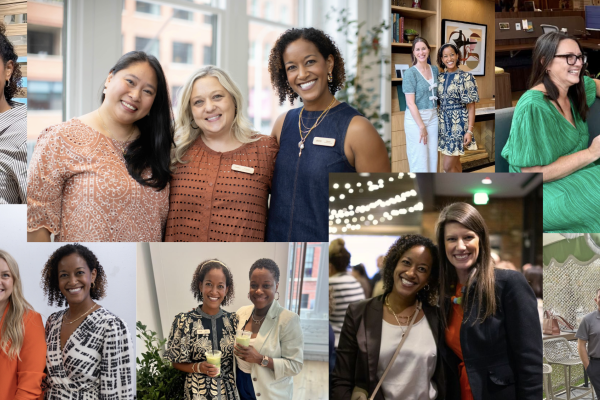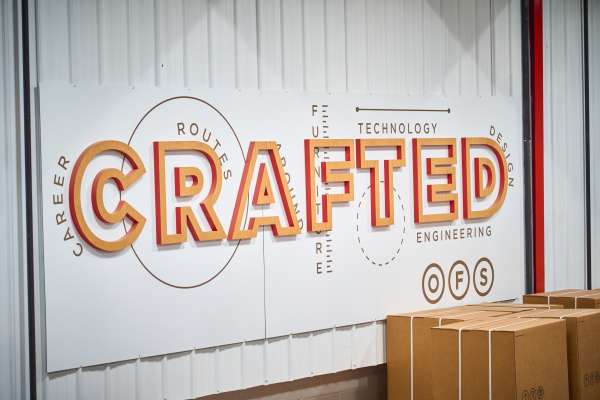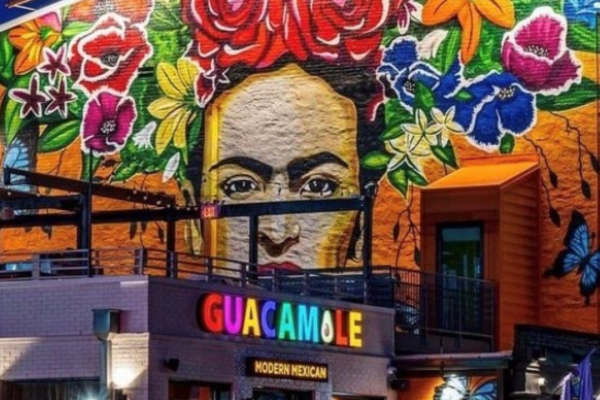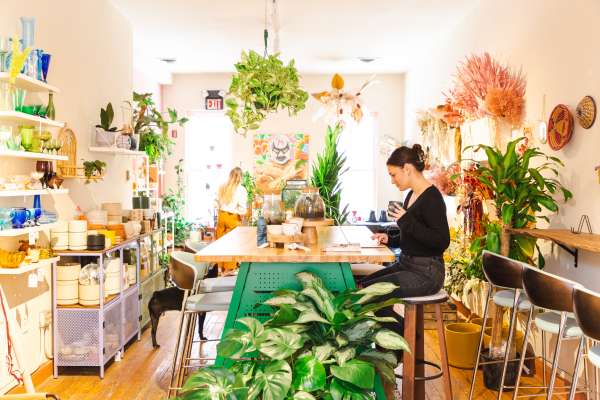Ox-Bow School of Art and Artists Residency
Two and a half hours northeast of Chicago, tucked away in the sandy dunes surrounding Saugatuck, Michigan, rests the 115-acre campus of Ox-Bow School of Art and Artists’ Residency.
Founded in 1910 by Frederick Fursman and Walter Marshall Clute as a community and laboratory for creative expression away from city life, Ox-Bow claims a century-long history as home to creatives of all backgrounds—offering year-round programming for degree-seeking students, professional artists, and individuals new to the arts.
Ox-Bow’s longevity can be attributed to its simple mission and the dedicated artists who have long since upheld it: “to serve as a haven for the creative process through instruction, immersion, and community.”
How does community influence creativity?
To artists and staff who return each year, arriving on campus feels like rolling up to summer camp. There is a timeless sentiment at Ox-Bow that makes it easy to disconnect from the rest of the world. (The spotty Wi-Fi and cell reception help with that, too.) Scattered around the property are 30 colorful buildings and cabins built nearly a century ago. These quirky and quaint structures serve as living and studio space for the cross-generational group of students, artists, faculty, and staff that make up the community.
For many artists, creative work is an intensely rigorous and private focus. They often work alone on ideas and art during weeks of isolation and routine. Ox-Bow takes a radically different approach to art-making and education. Campus Director Claire Arctander believes the element that differentiates the school from regular institutional learning environments is community.
As a place that’s been cultivated and nurtured for the last hundred years, there have been a few discoveries along the way worth noting, but one, in particular, that’s core to its belief is this: Community influences creative output.
In a highly individualistic and often isolating field, it can be easy to lose sight of collaboration and the larger impact we can have when we share ideas with each other. As Executive Director Shannon Stratton says, “Ox-Bow has a way of getting into your bones.” What she means by the idiom is this: Creative exchange, whether it’s done in a classroom, studio, or around a bonfire, becomes second nature at Ox-Bow and the benefits of this are far-reaching.
Creative experimentation and change invariably stem from the influences of the new, old, and in-between that all coexist at Ox-Bow—where everyone is both a student and a teacher. This fluid interaction can be hard to achieve in organizations where hierarchy and rules dictate leadership and roles, but at Ox-Bow, it flourishes.
Being a part of a creative, caring community nurtures our artistic practices and our personal identity. When we break out from a singular mindset and open our ideas and craft to new people, places, and techniques, it makes room for discoveries. What Ox-Bow has come to know and embody is this: Sustained creativity is rarely one talented individual, but rather a creative community influencing each other to learn and grow together.
How can emotional safety transform your work?
If artists had their own hierarchy of needs, risk-taking and vulnerability would live somewhere at the top, near self-actualization. But reaching that level of comfort, where as an artist, you feel safe enough to push your vision and boundaries, requires a key element to be in place first: safety.
Metals Studio Manager Devin Balara made a comment that rings true for creatives in all fields: “In order to want to take the risks necessary for creative output, there has to be a certain level of safety around you.” What Balara points out is the emotional safety net that is deep-seated in Ox-Bow’s culture. When we feel good in a place, it often becomes imprinted in our memories and hearts as a safe environment to simply be ourselves.
Although the community serves as a sounding board for residents, the safety Balara speaks of is something that comes from within. Knowing what you are feeling and being in a place that grants you permission to identify those emotions and take the risk of actually feeling them leads to growth in our lives—personally and professionally.
Feeling comfortable enough to be vulnerable and embrace risk is an incredibly powerful experience and opens the door for authentic social connections. It also leads to a greater level of trust—in those we surround ourselves with and in ourselves—which helps us grow more accepting of our failures and even the process of failing.
For Balara, “safety” is a combination of the vulnerability, courage, and action that comes from within when we feel secure enough to take risks. “When you have the space to fail,” comments Balara, “then you also have the space to surprise yourself in really amazing ways.”
Joy and acceptance
When you think about the word “create,” it’s often associated with a process. So what does it take to create an environment where repeated experimentation occurs every day? The answer at Ox-Bow is simpler than you might think. It’s not a process, but rather an emotion: joy. And some good old-fashioned goofing off from time to time.
Ox-Bow seems to have mastered the art of not taking itself too seriously, yet offers very intentional, experiential, and experimental opportunities. As an institution that attracts world-class artists and faculty, the break from traditional studio environments can restore the creative spirit and expand artistic vision.
The teaching and mentoring method at Ox-Bow takes on a more holistic and flexible approach, allowing students, artists, faculty, and staff to engage more deeply. Classroom and studio time spills into mealtime, bonfires, and notorious Friday night costume and dance parties. Balara explains that the staff and faculty all respect one another as experts, yet also know how to celebrate life together.
Each week’s culmination takes place in the meadow under a large white tent as the focus shifts from studio work to letting loose and dancing with friends. It’s a tradition that can be both seen and heard from visitors hiking through the trails surrounding the campus. Colorful lights, disco balls, costumes, and music electrify the natural surroundings and emphasize the locale’s critical component: fun. Arctander explains that both the dance parties and diverse history at Ox-Bow have existed since its inception and have become one of the community’s many cultural pillars, bringing with it a level of inclusivity and progressiveness that is core to the place.
For Ceramics Studio Manager Dove Drury, living at Ox-Bow has helped to develop and unlearn patterns of experience that are no longer healthy or important to one’s well-being. There is an incredibly empathetic spirit that lives on campus, one that has helped countless people find their identity and a greater sense of self-compassion.
Acceptance and joy are two very powerful emotions, and the energy they create comes from the way we interact with ourselves and those around us. It’s safe to say that most creative people pursue their craft, not for fortune or fame, but because they find happiness in what they do. When joy and enthusiasm are shared within a community of people who avoid judging and genuinely care about each other, the ability to imagine art in new ways is unremitting.
How can a place evolve without losing its identity?
As staff members and faculty speak about Ox-Bow’s legacy and the significance “place” has with its relationship to sustainability, it makes you wonder: What are the intangible values that have allowed the school to thrive for over 100 years?
While it would be easy to make a running list of all the appreciable qualities Ox-Bow possesses, such as its beautiful natural surroundings and exceptional creative learning environment, Stratton summarized it best when she said, “In many ways, Ox-Bow is great at just being who it is in the moments when society needs more places like it.”
Perhaps the ever-elusive magic that exists at Ox-Bow is its ability to adapt and repeatedly change without ever losing sight of who it is and what it stands for. In each interview, we heard individuals referring to the place as “magical.” Although it’s hard to define or explain what magic really means, we couldn’t help but wonder: Is the magic they speak of really the feelings that accompany the place?
It’s often observed that visitors and residents of Ox-Bow have a way of finding their way back to the school—sometimes the following year, sometimes 20 years later. It seems to us that the magic of the place also has a way of working itself into the people who visit.
























